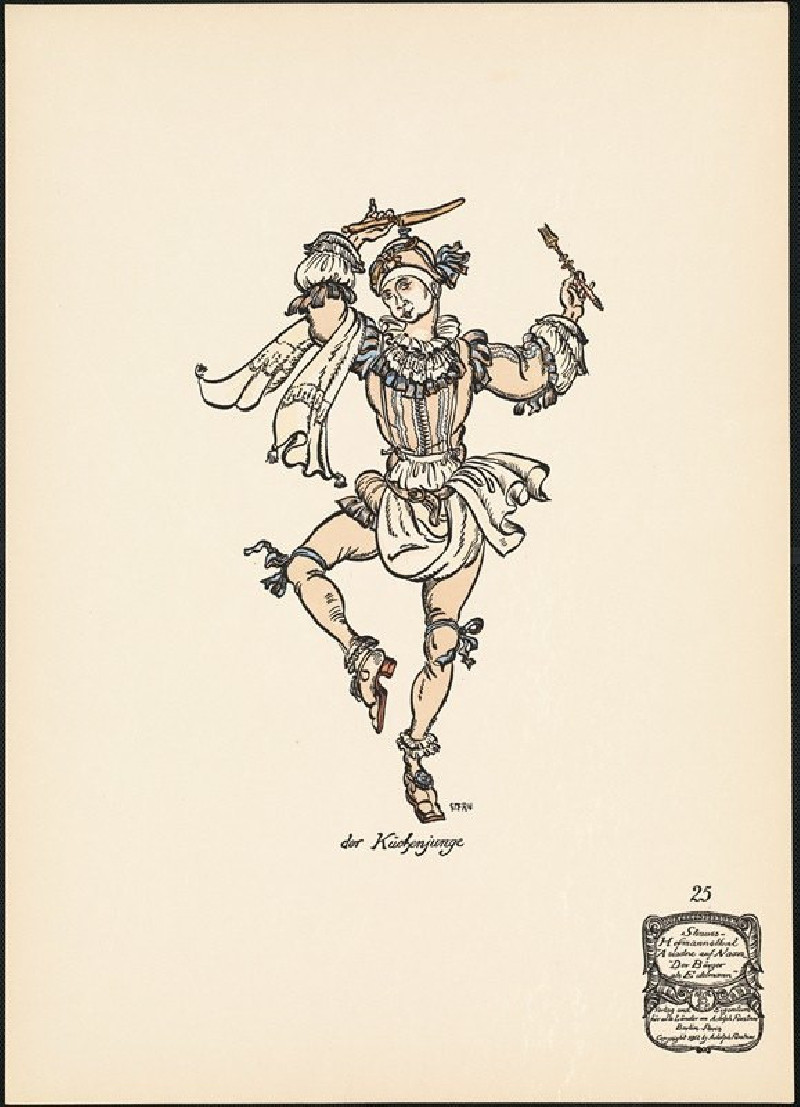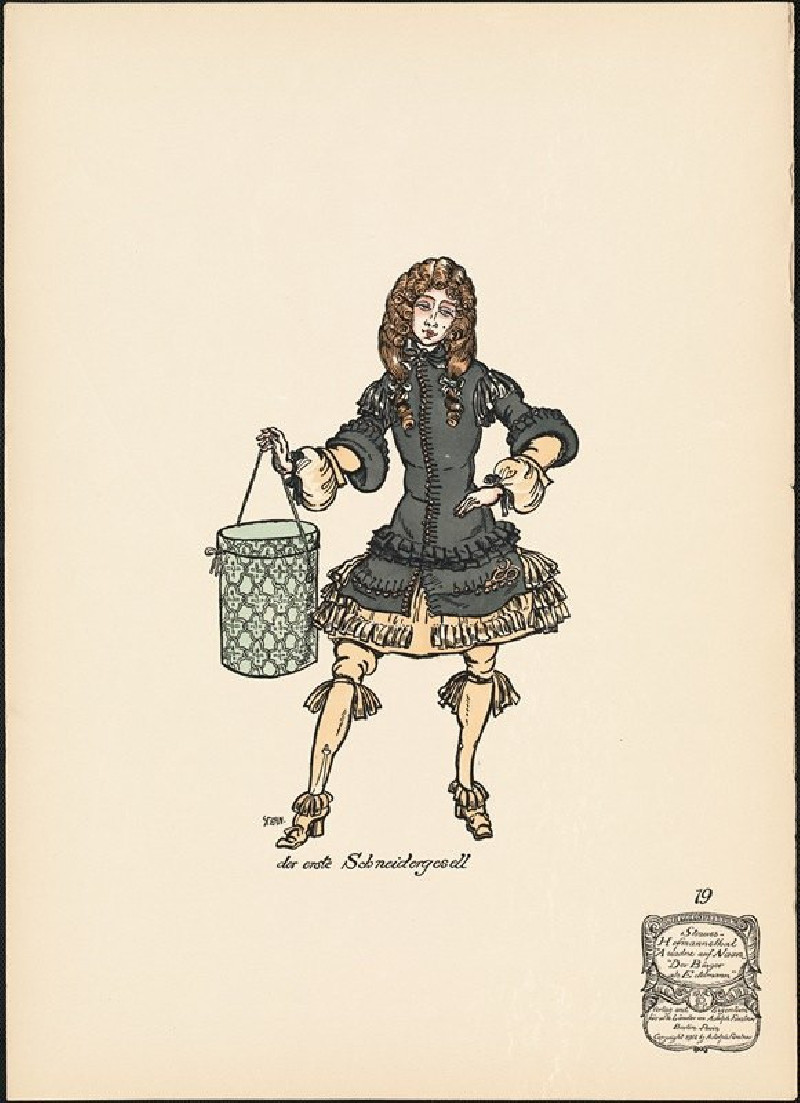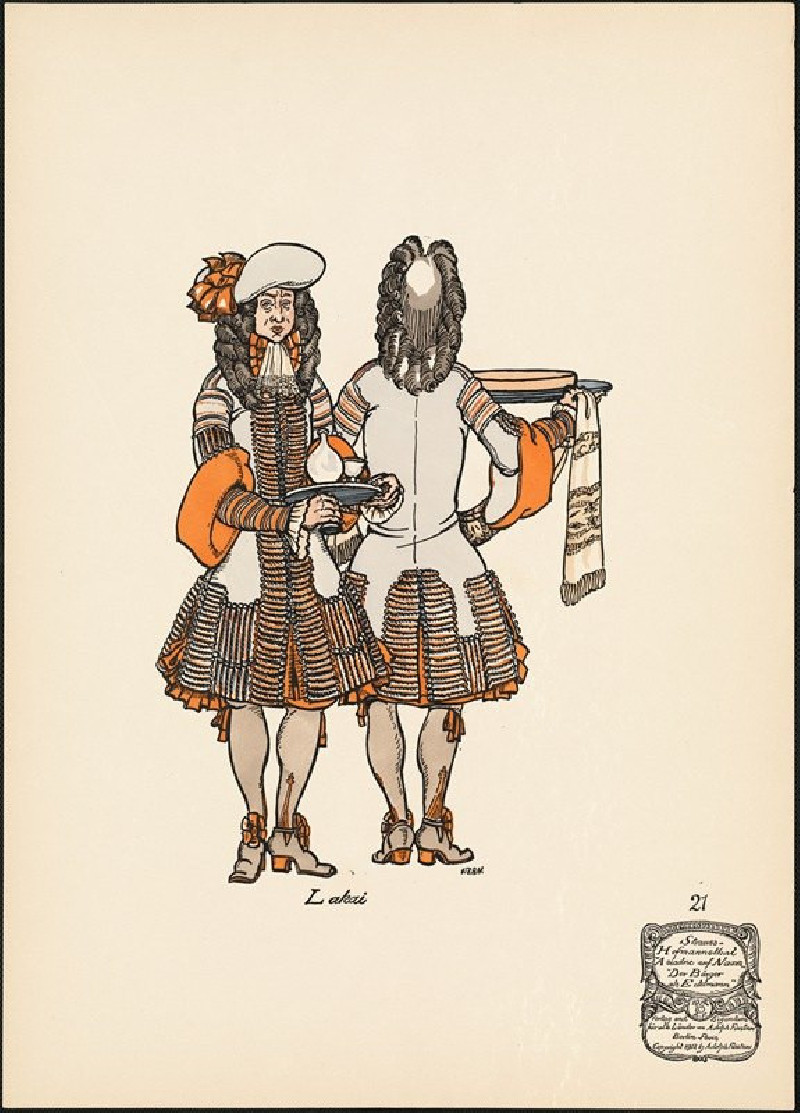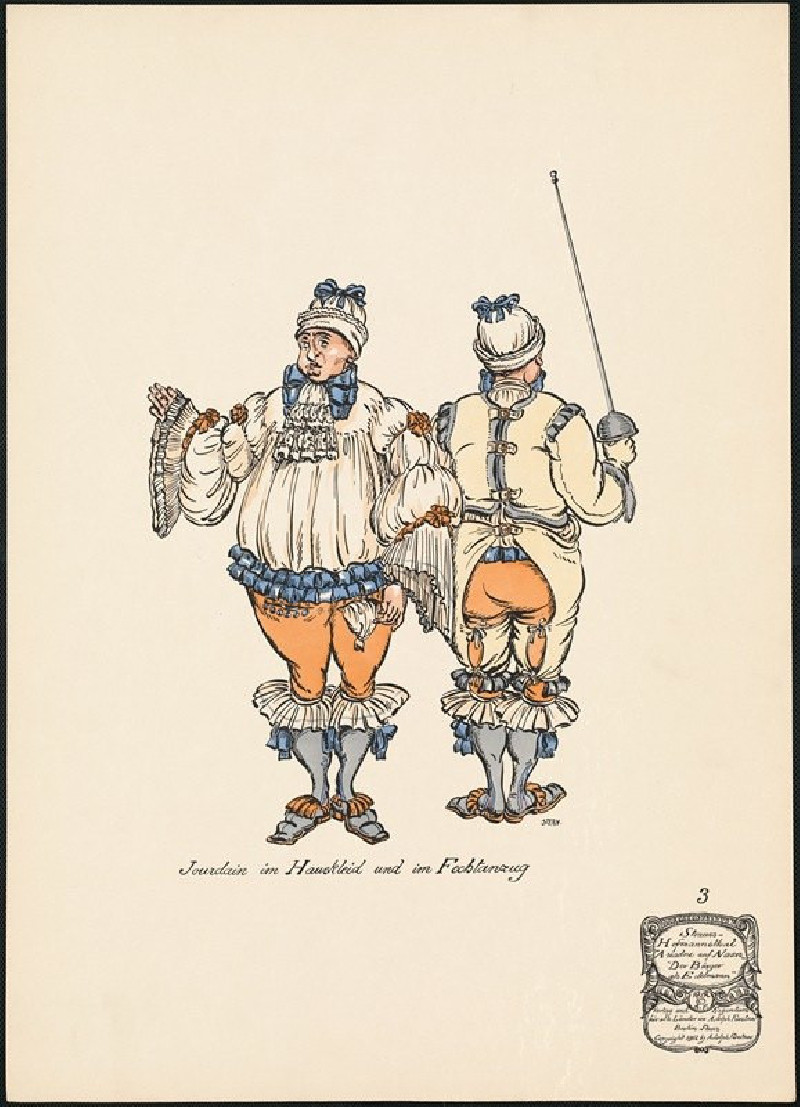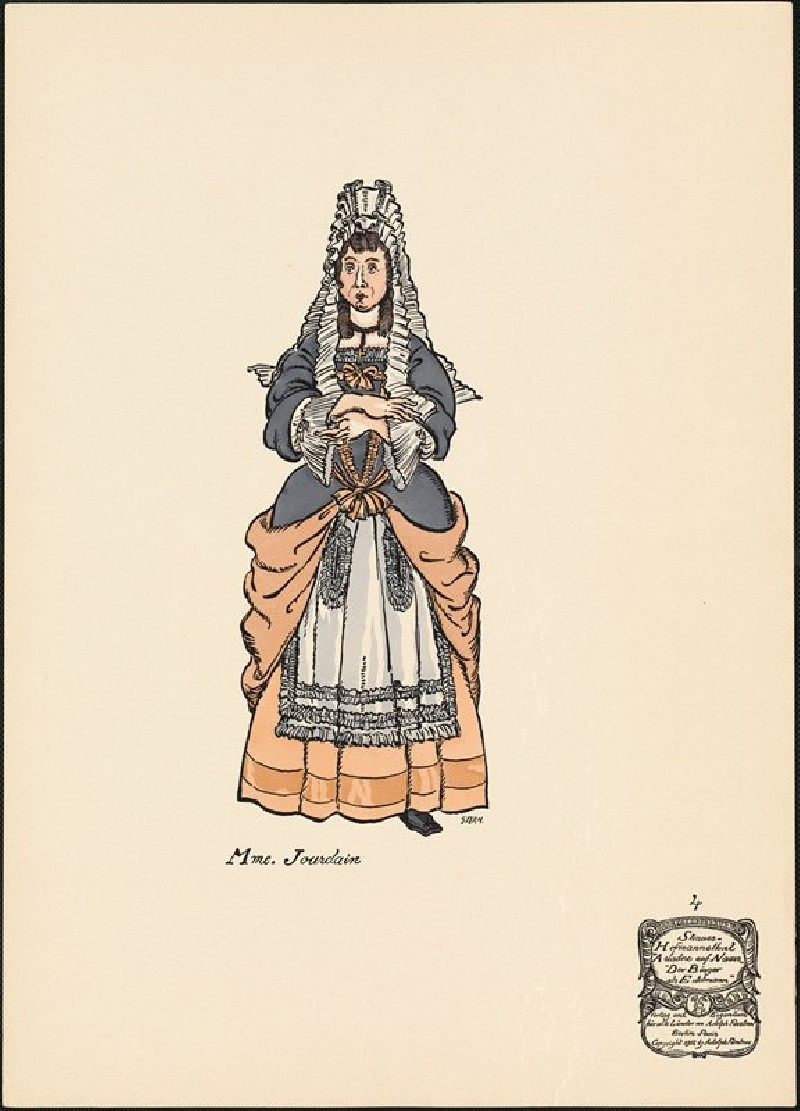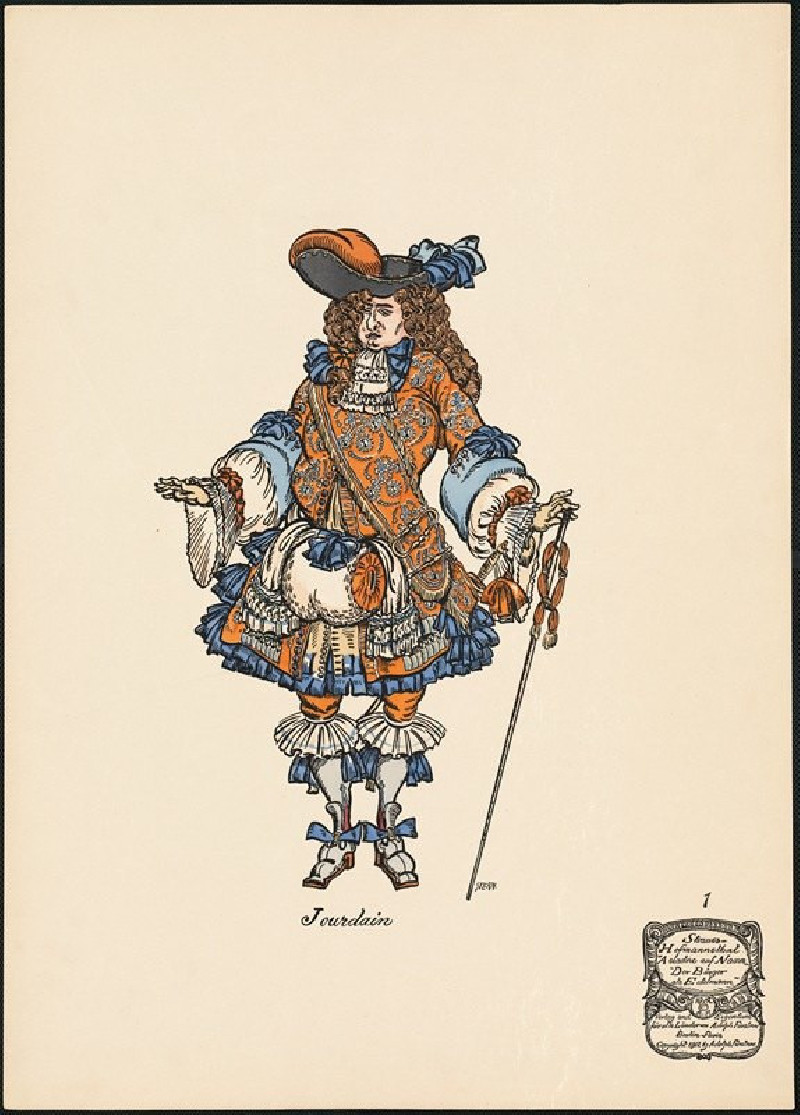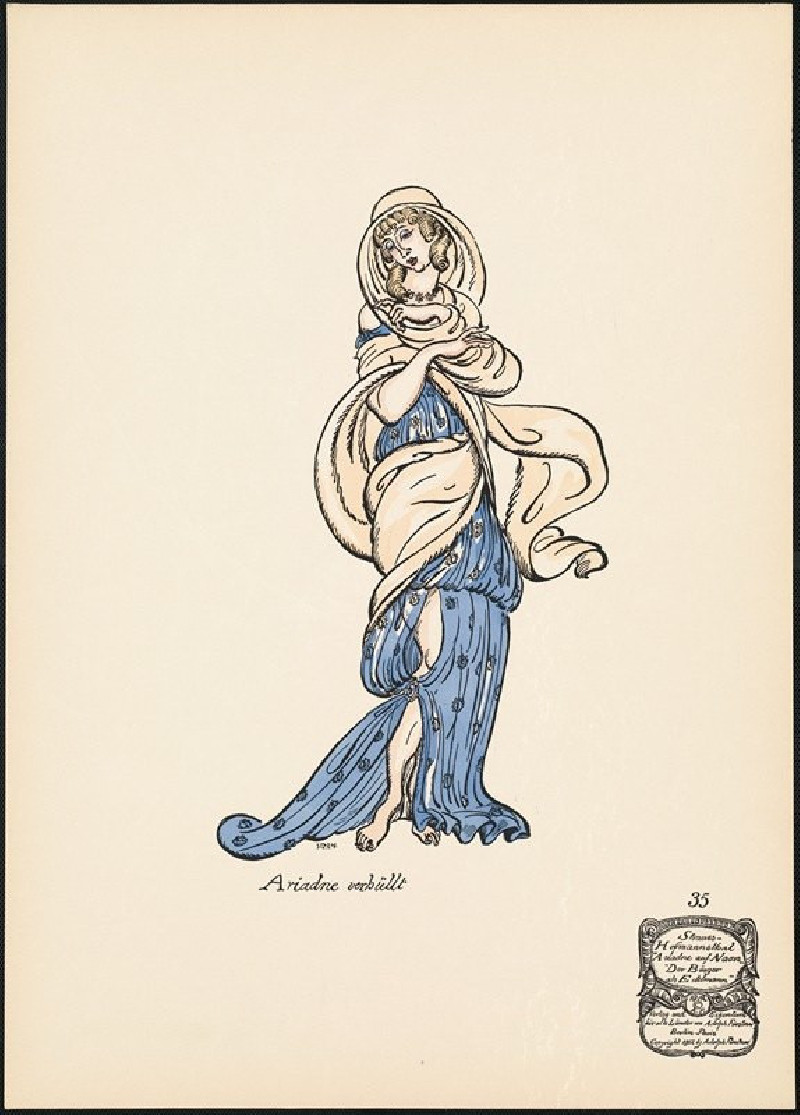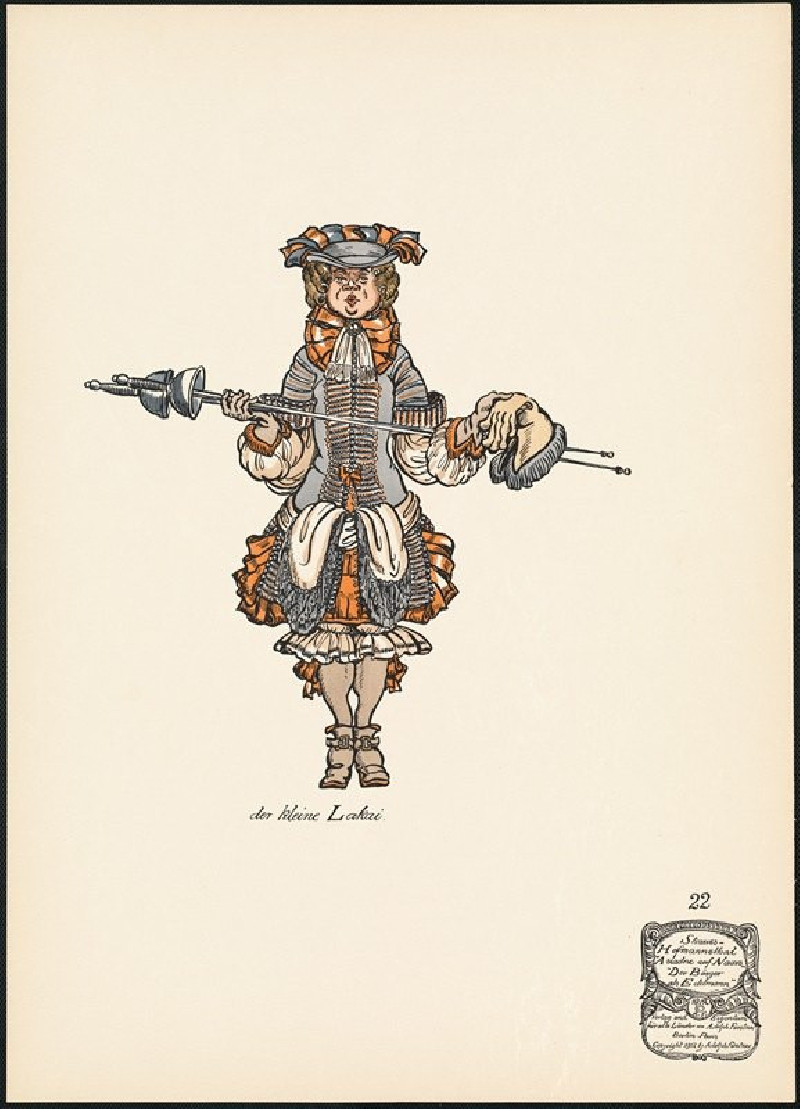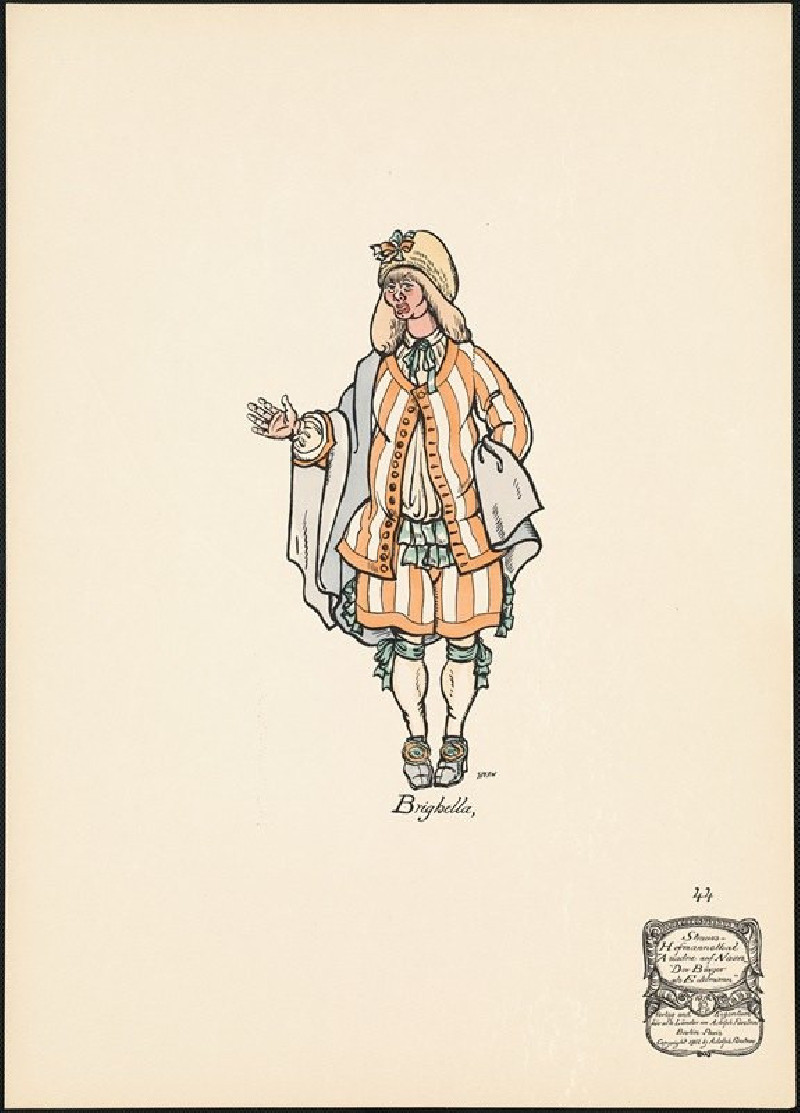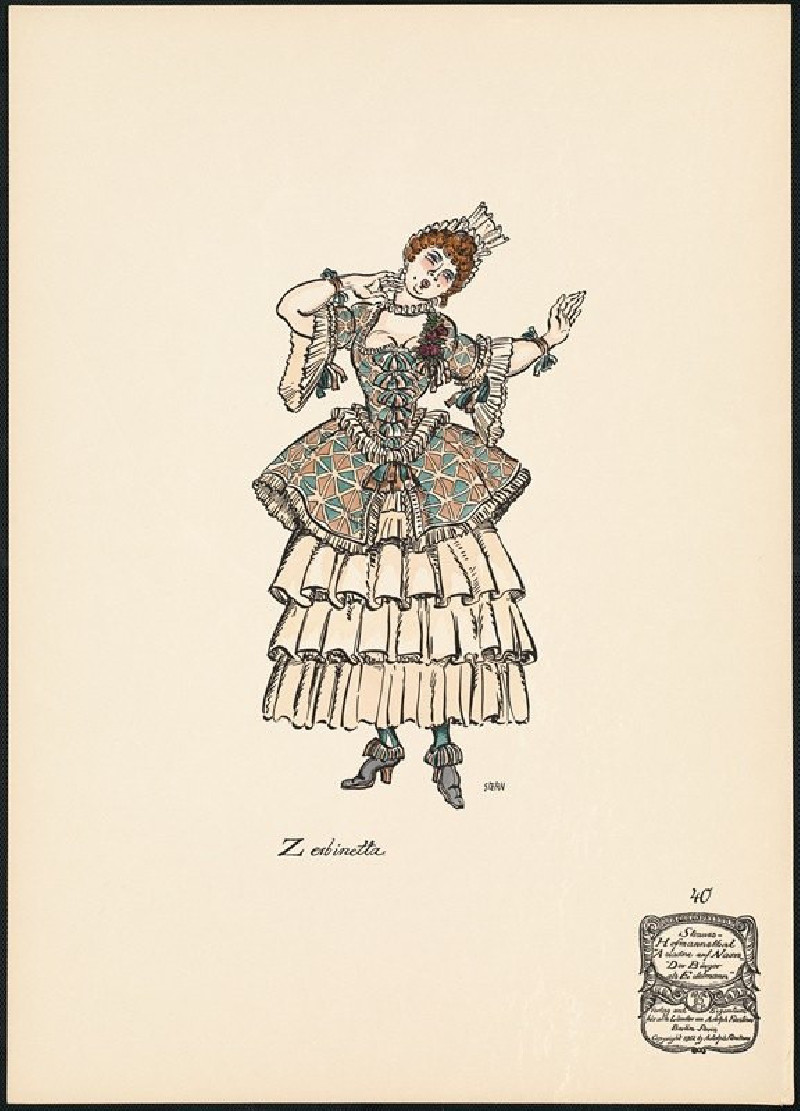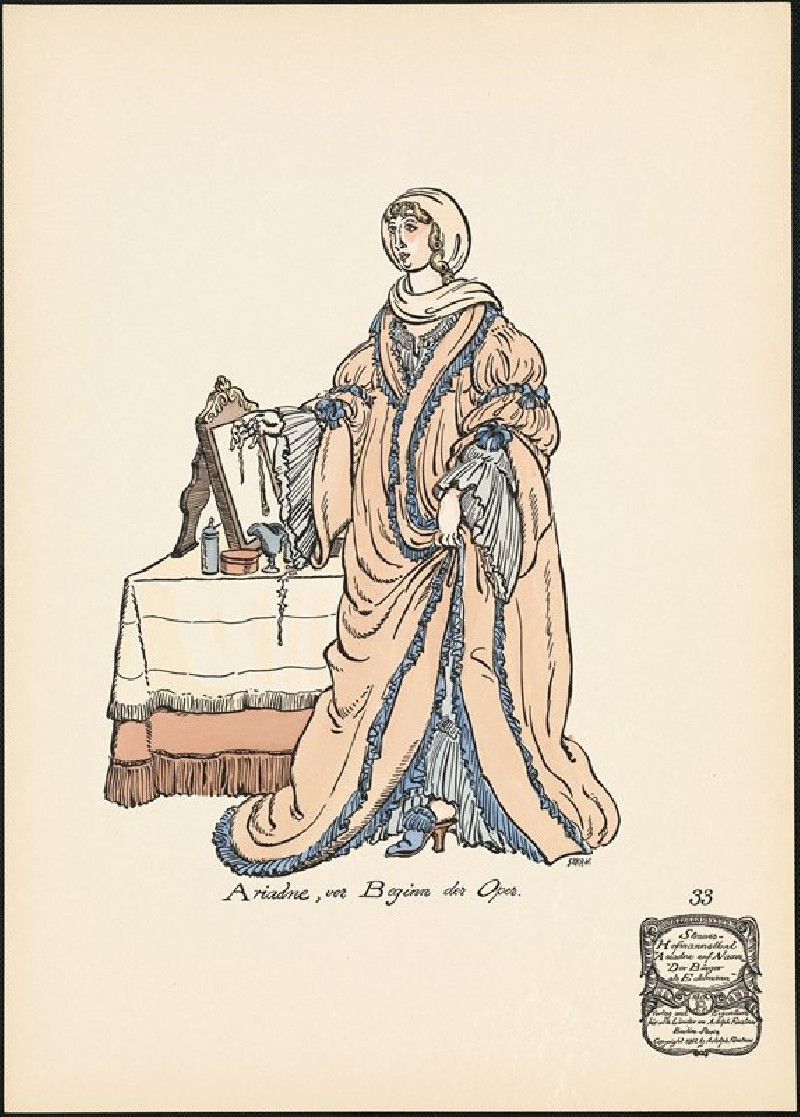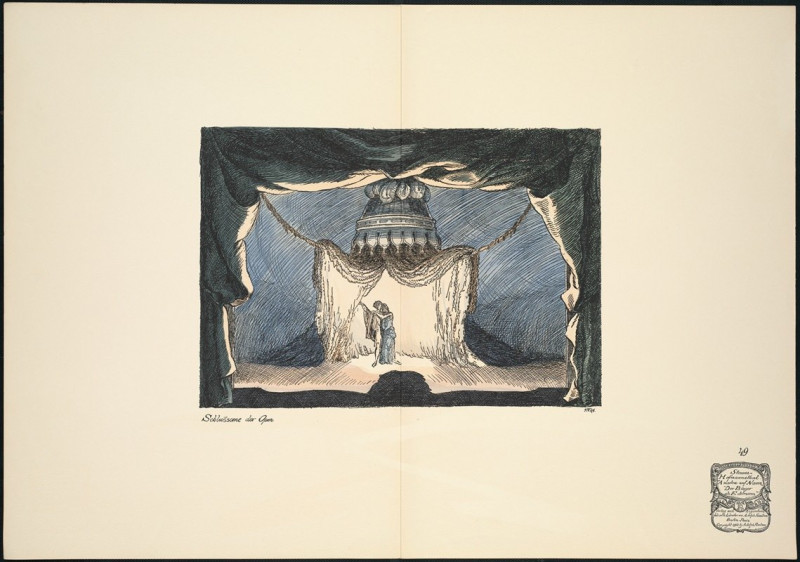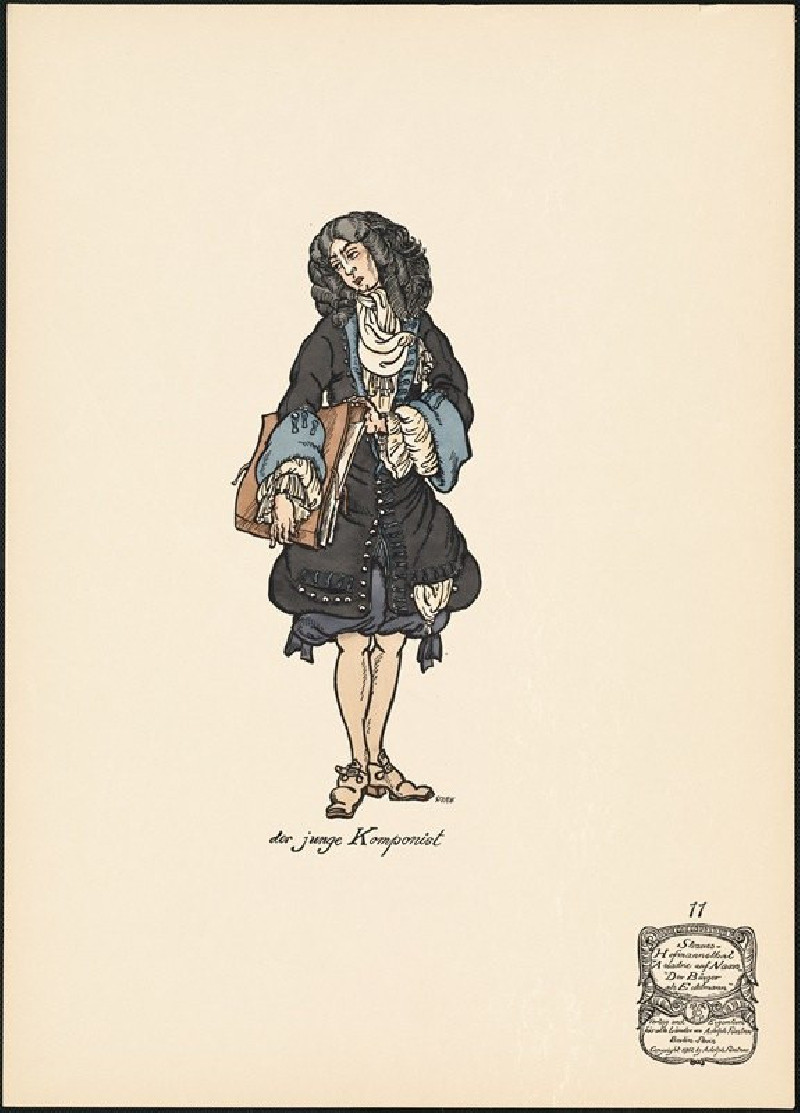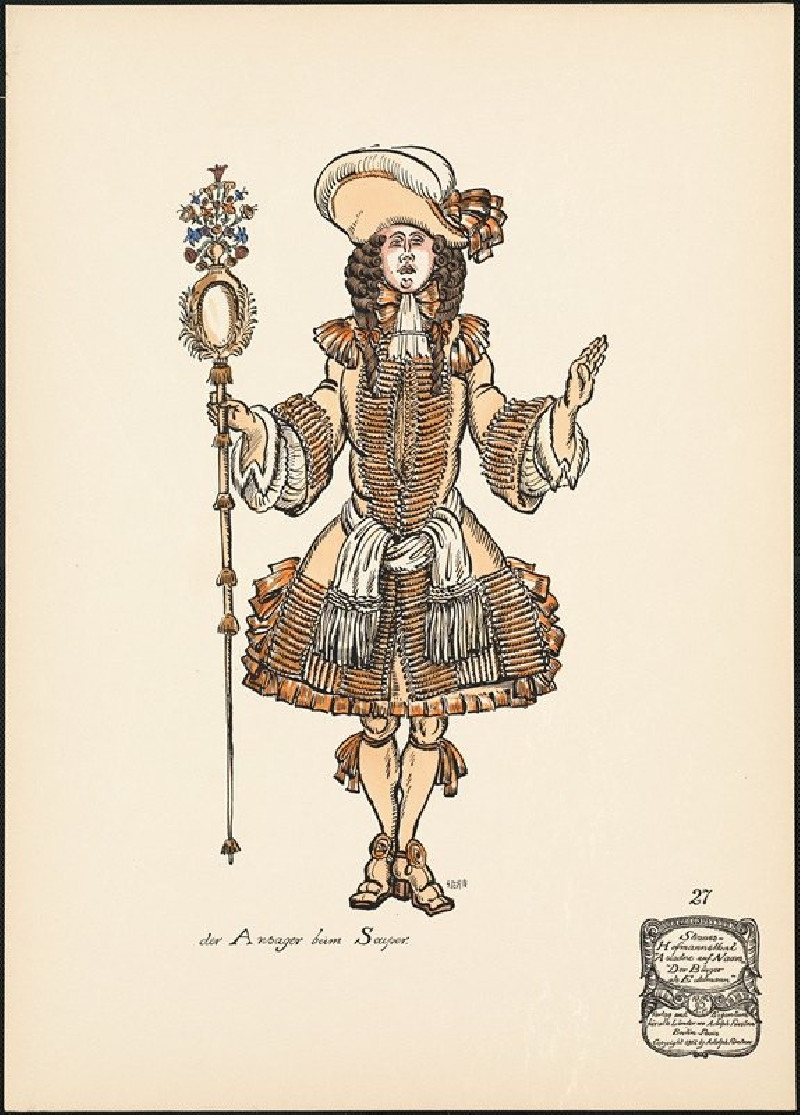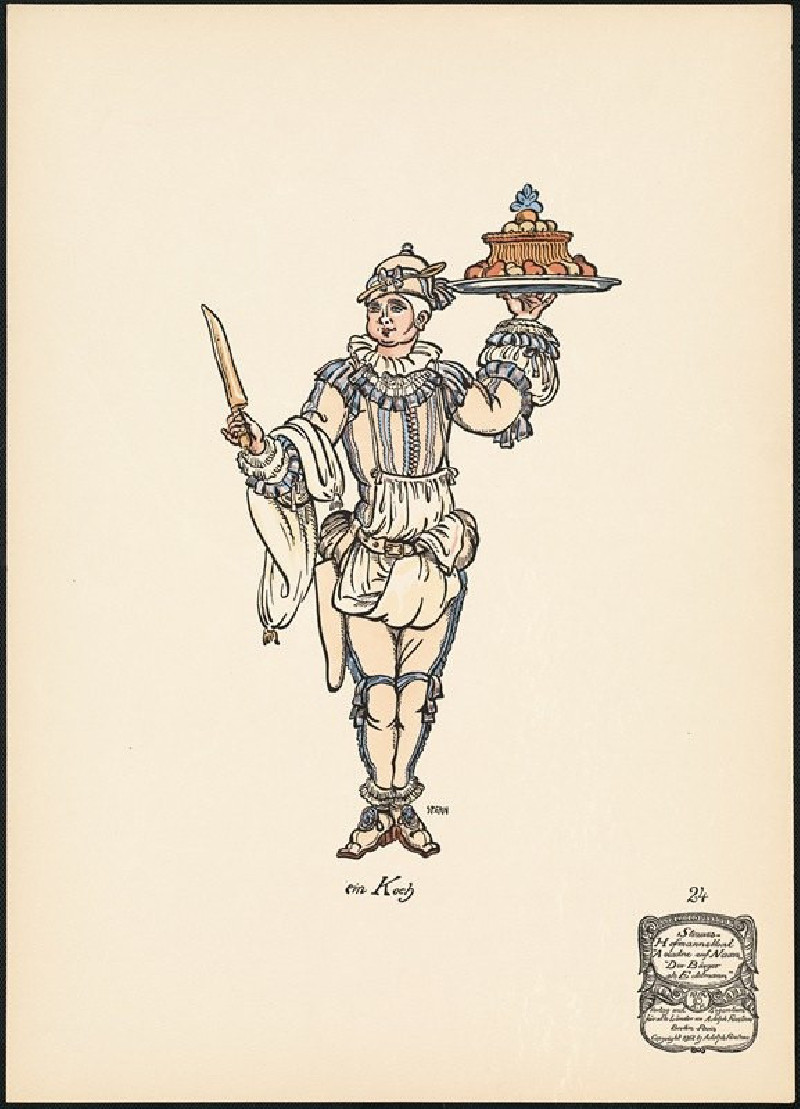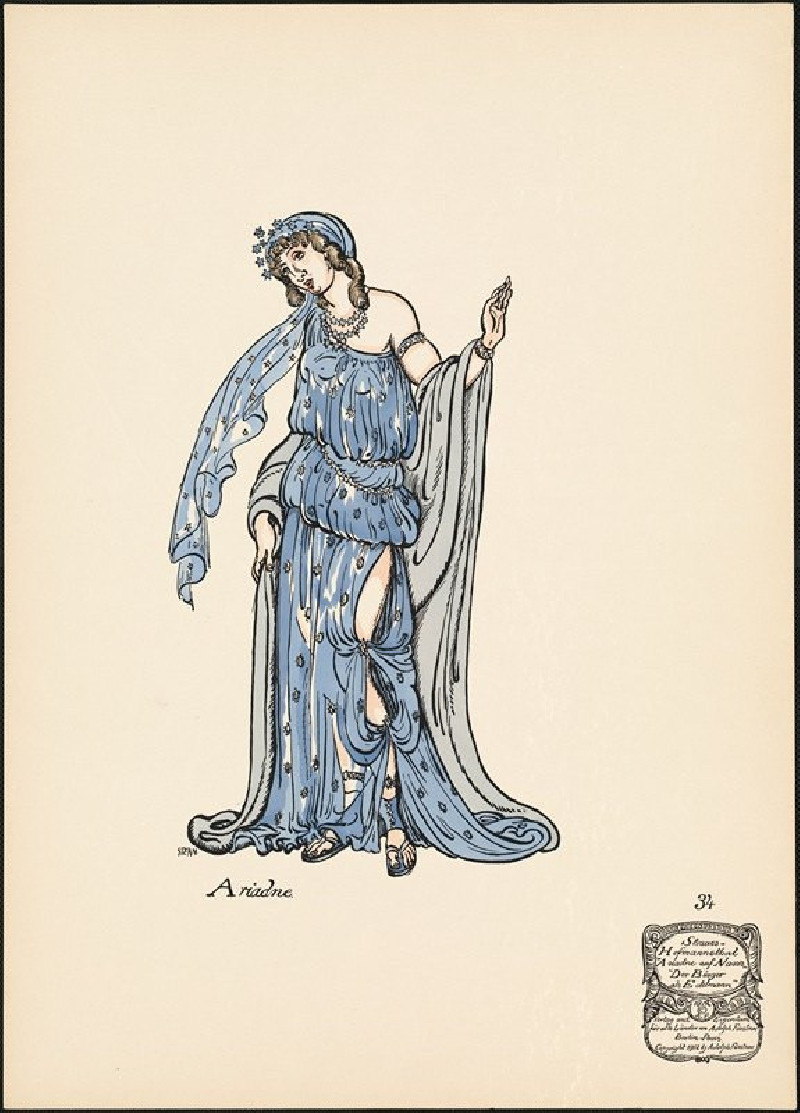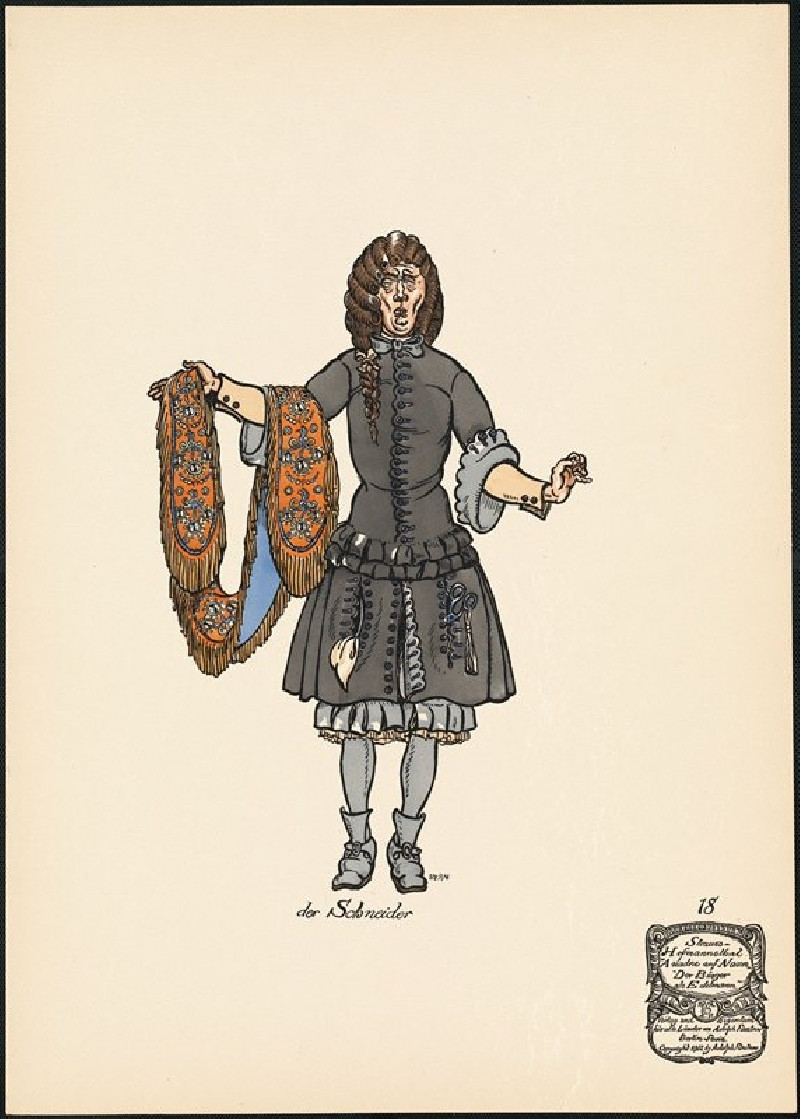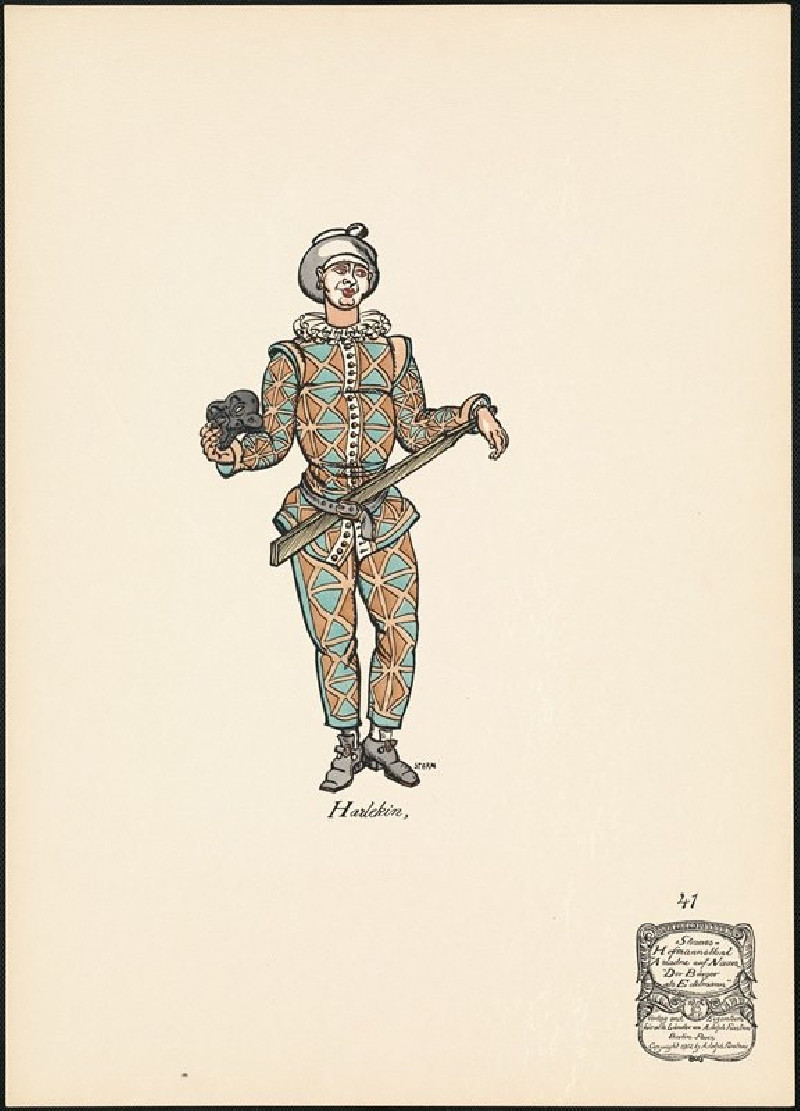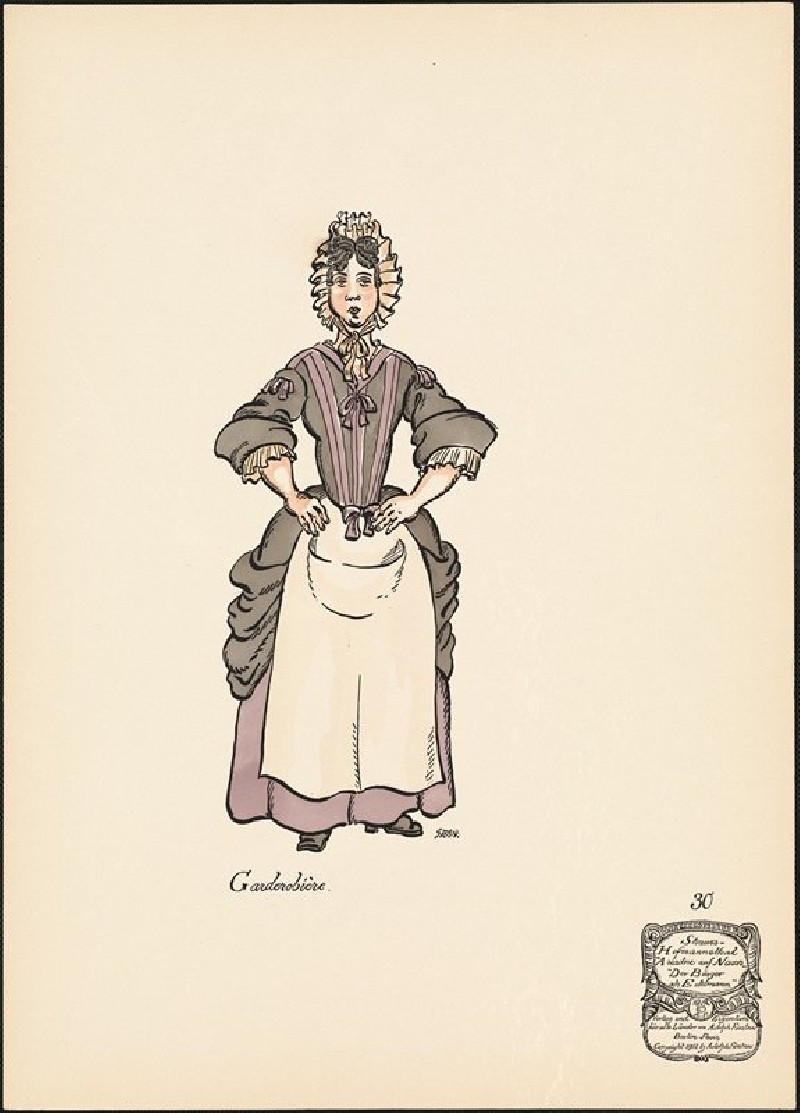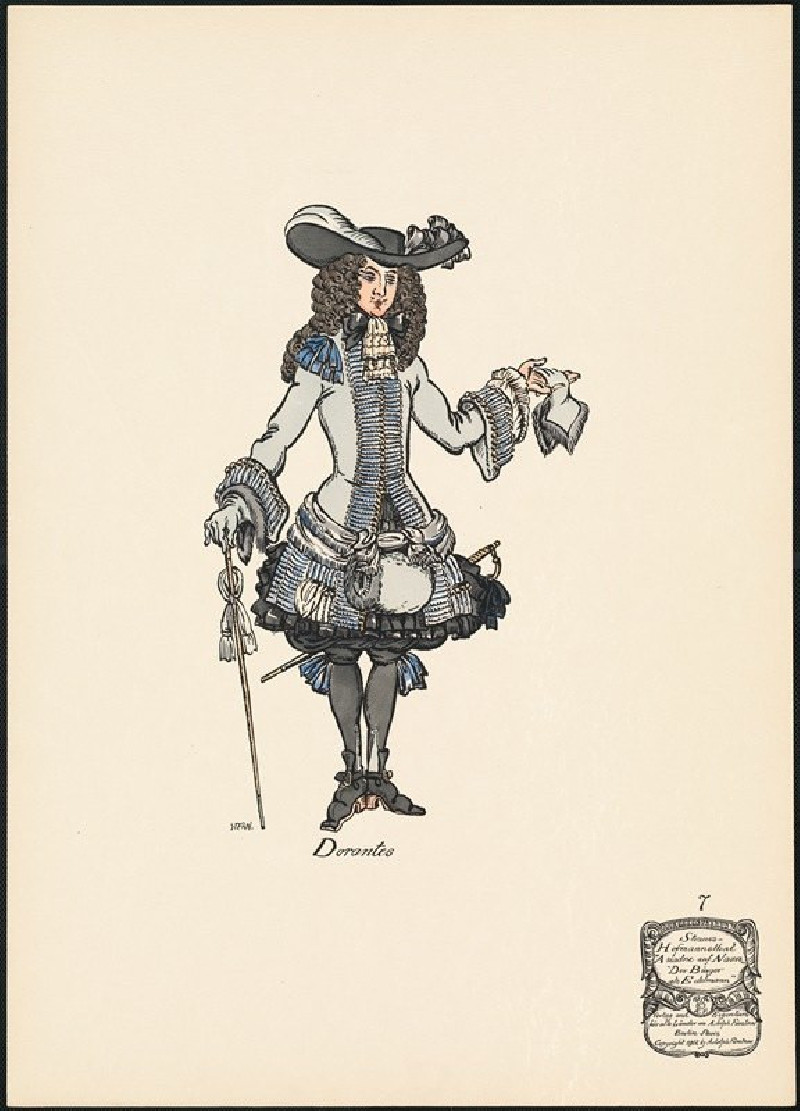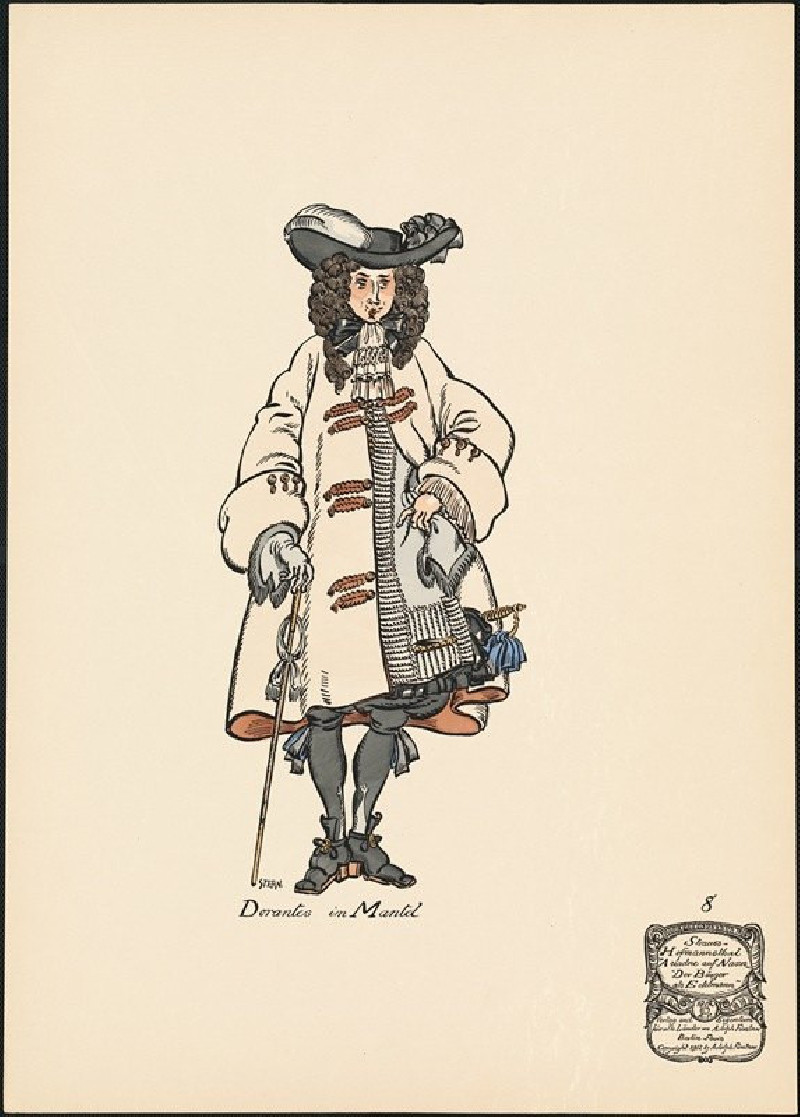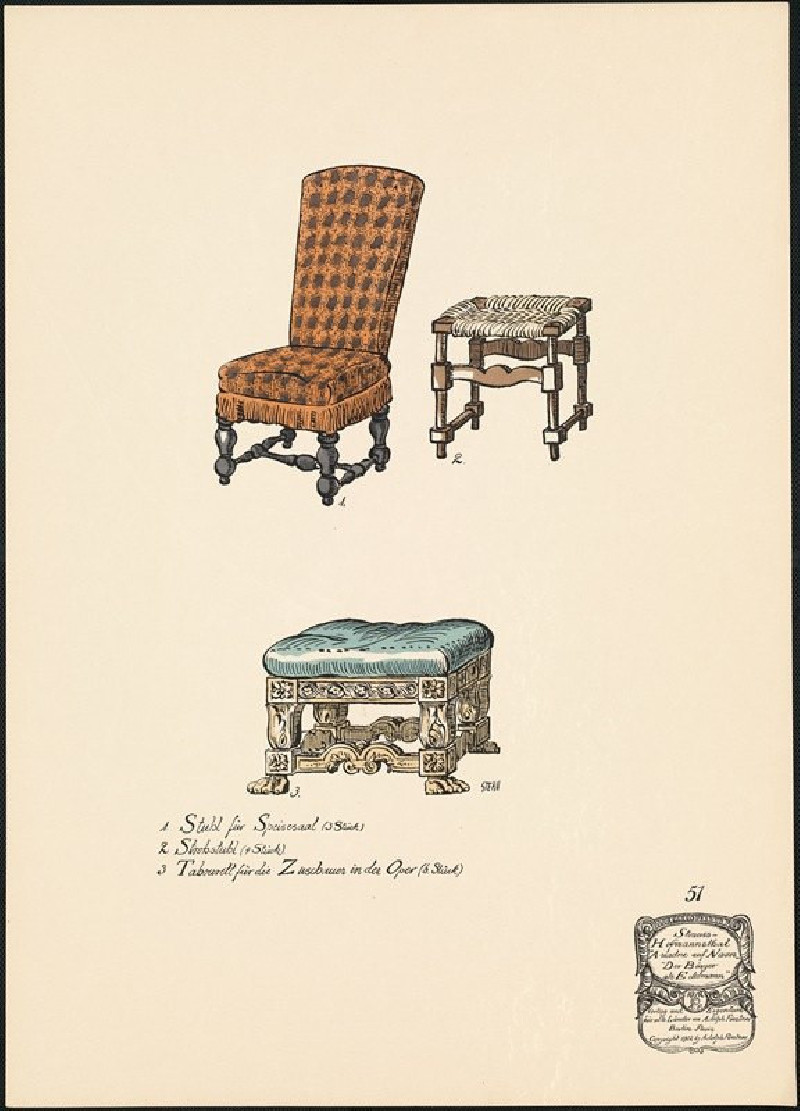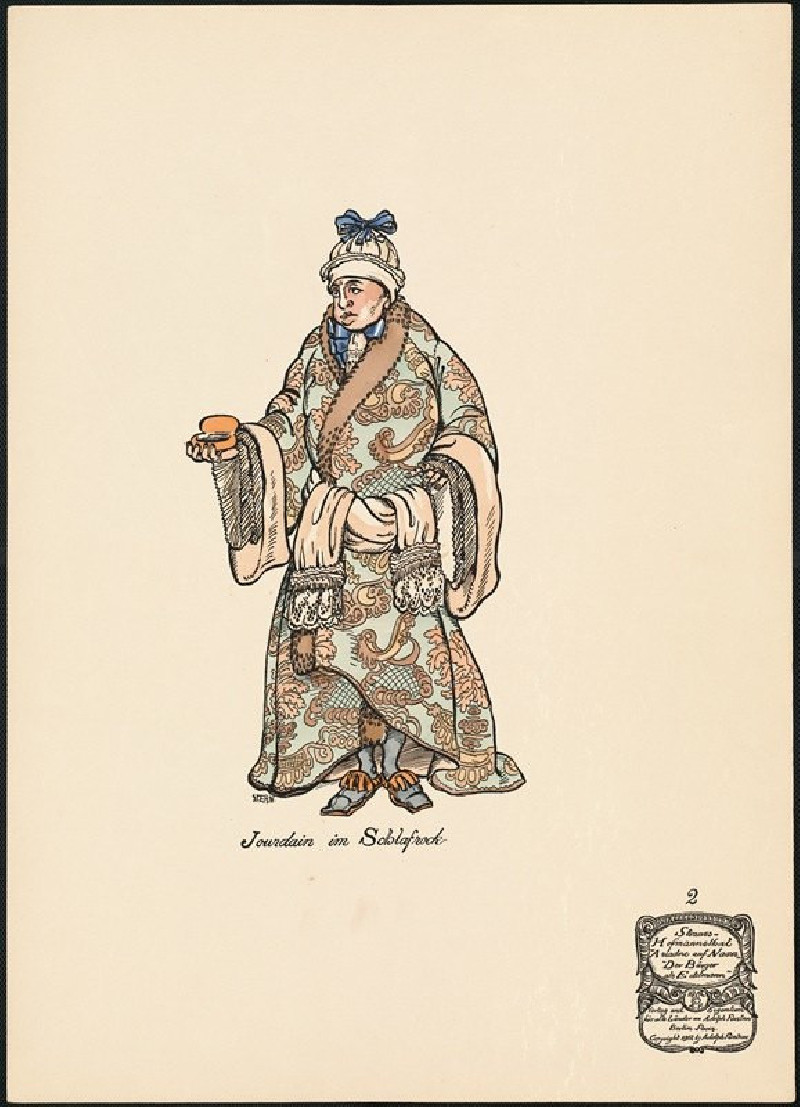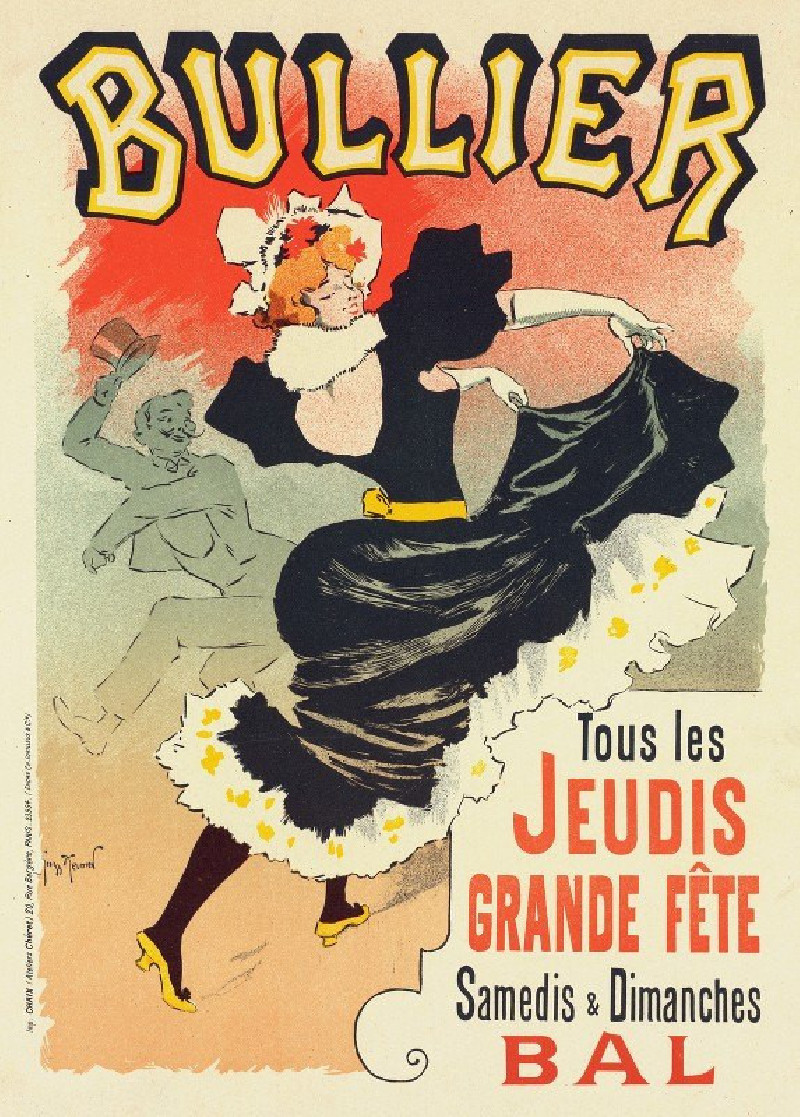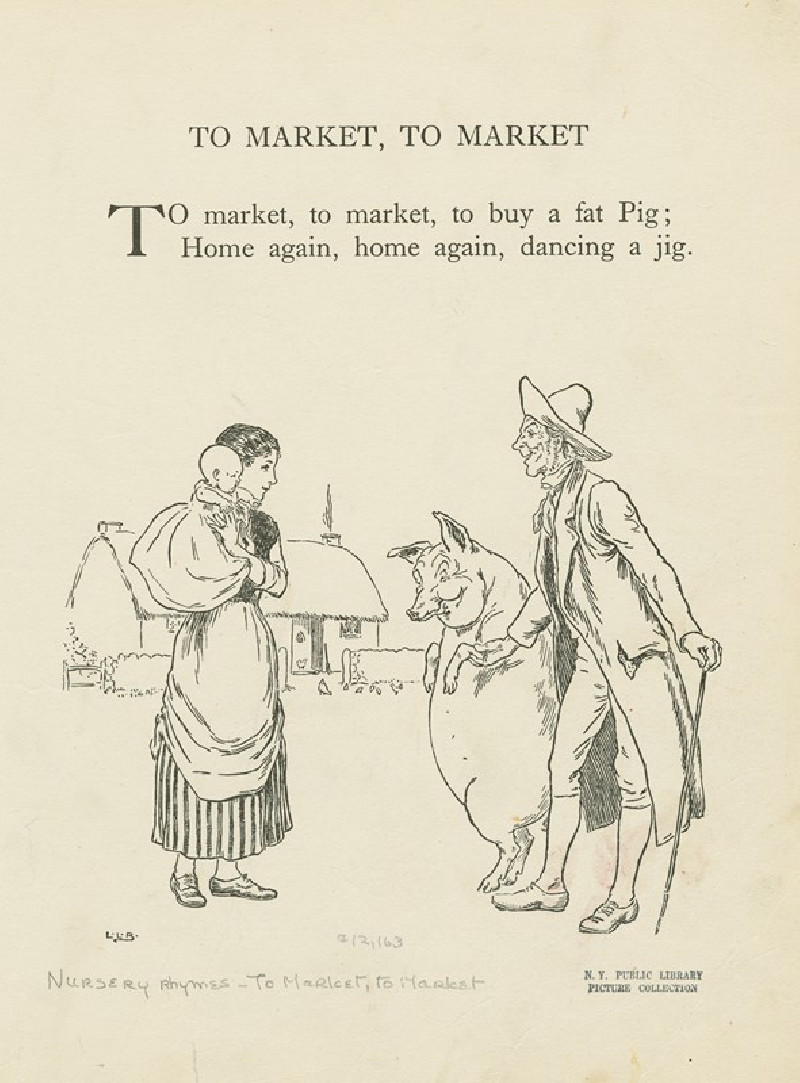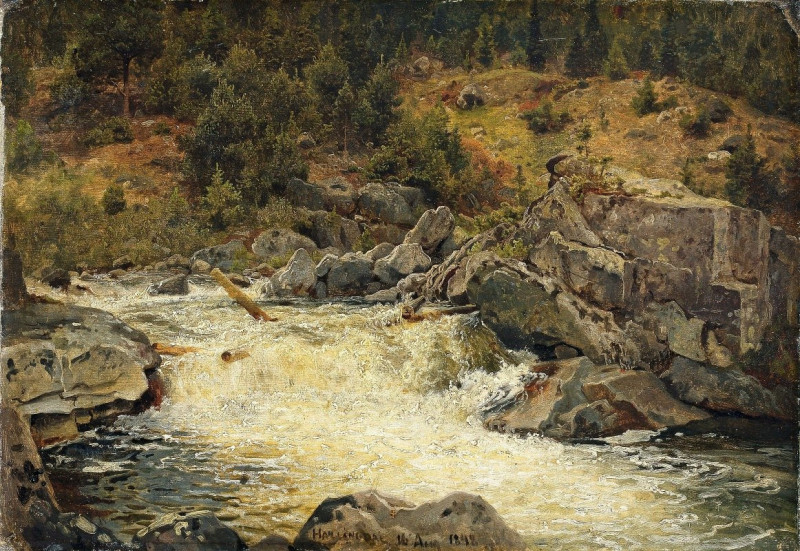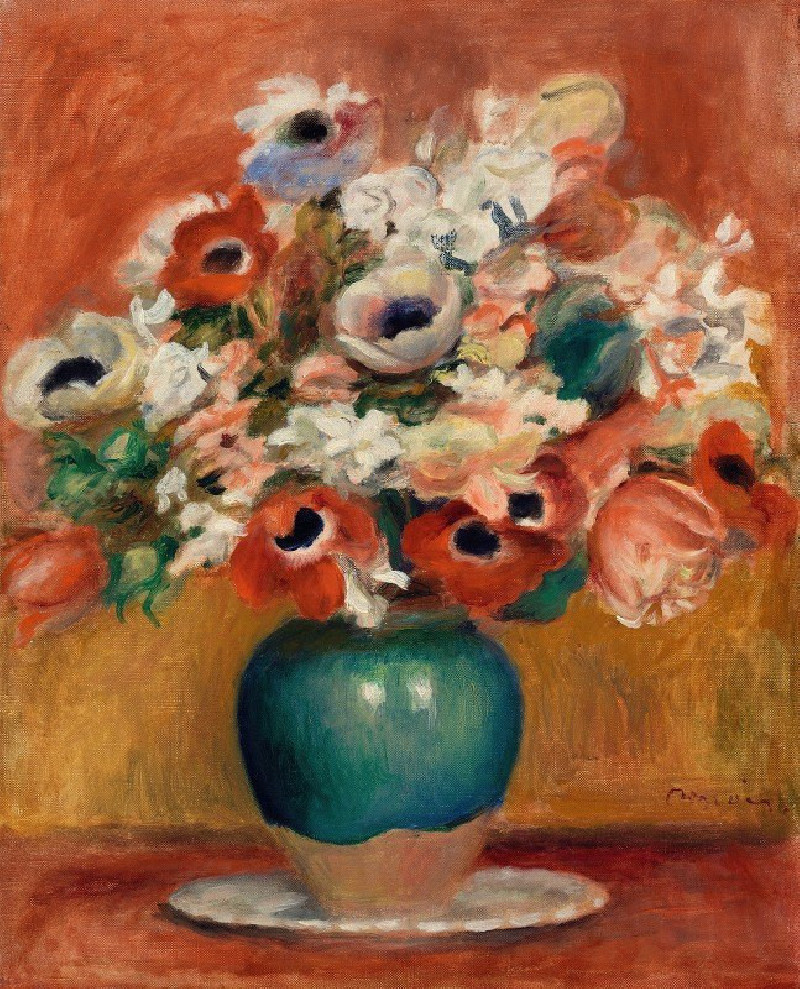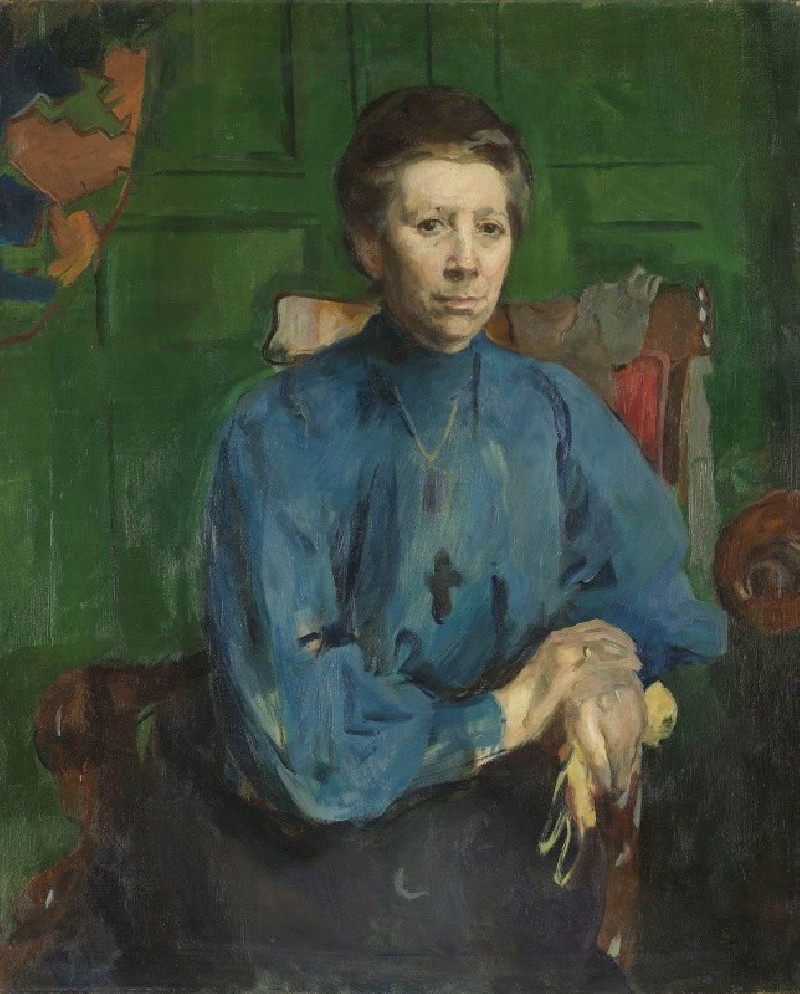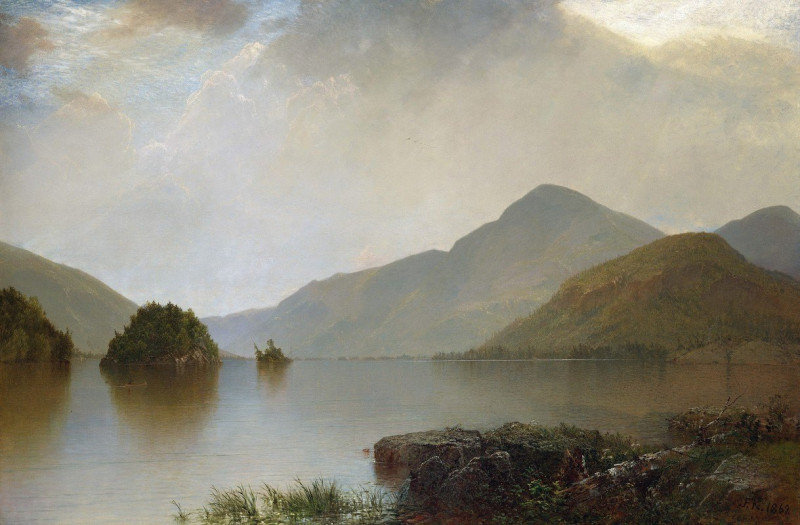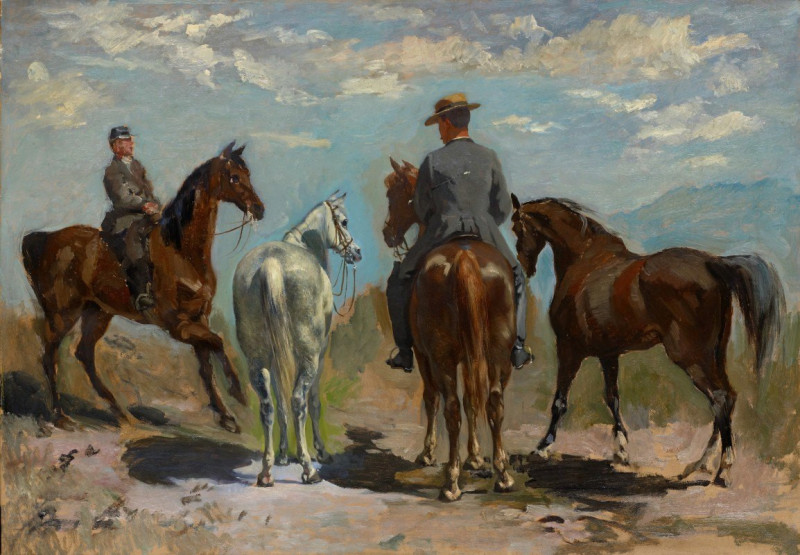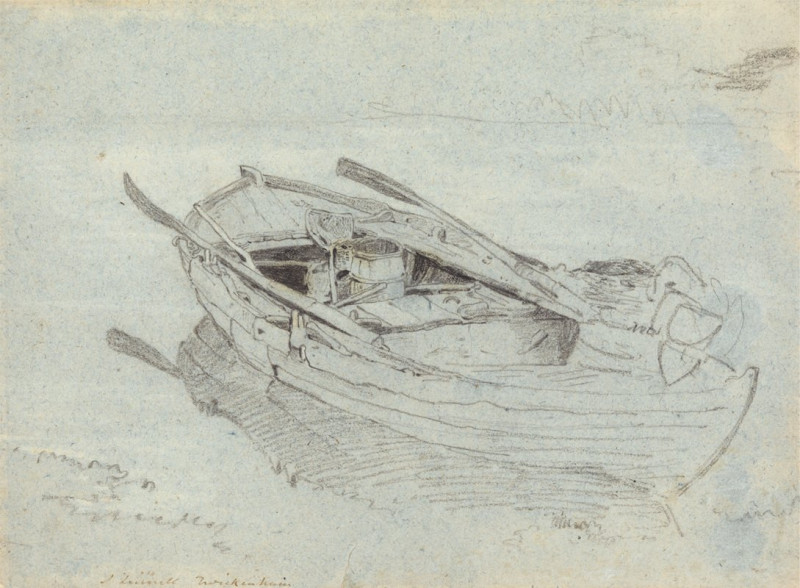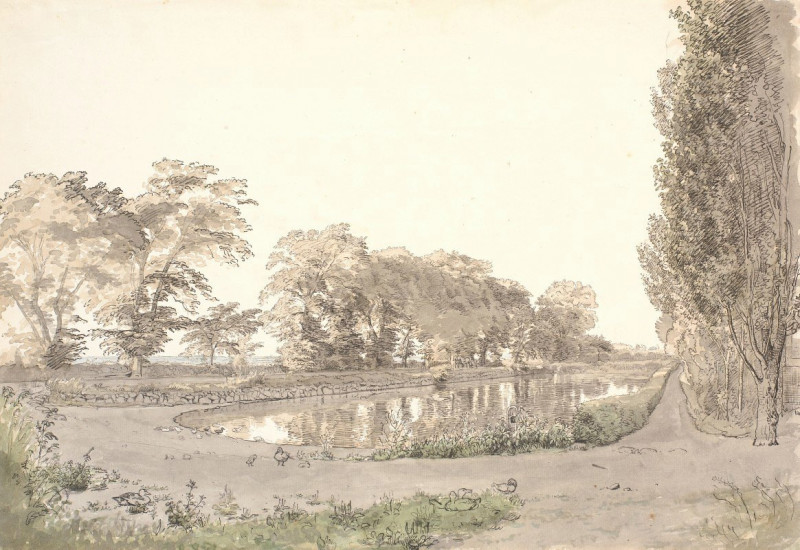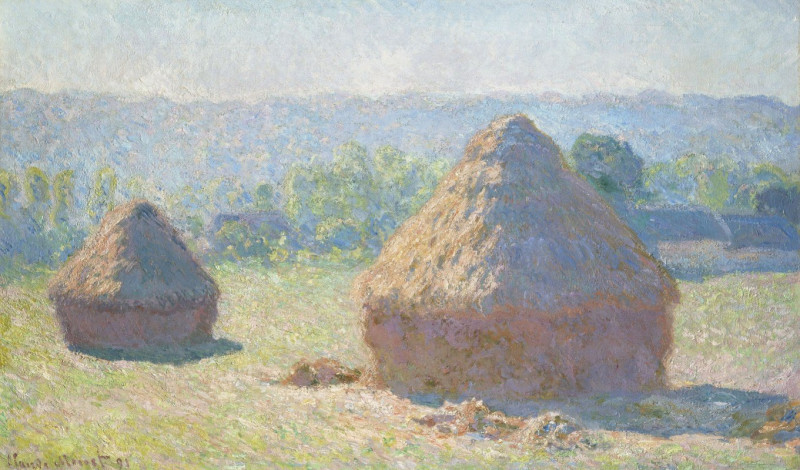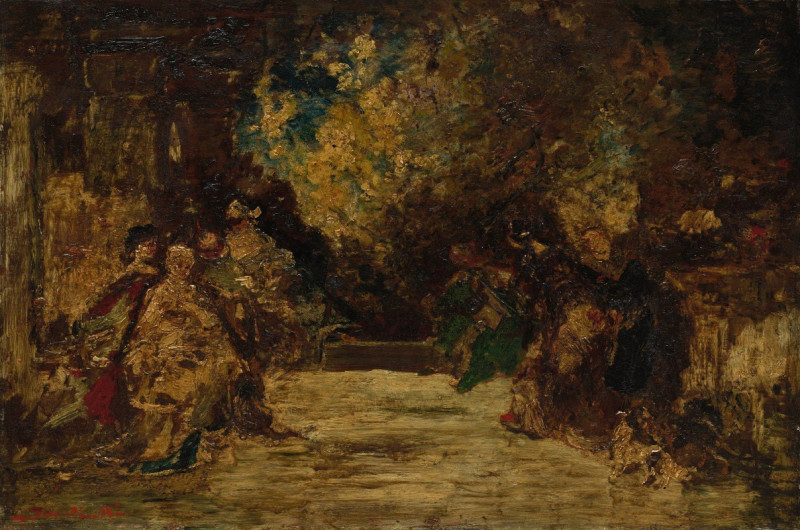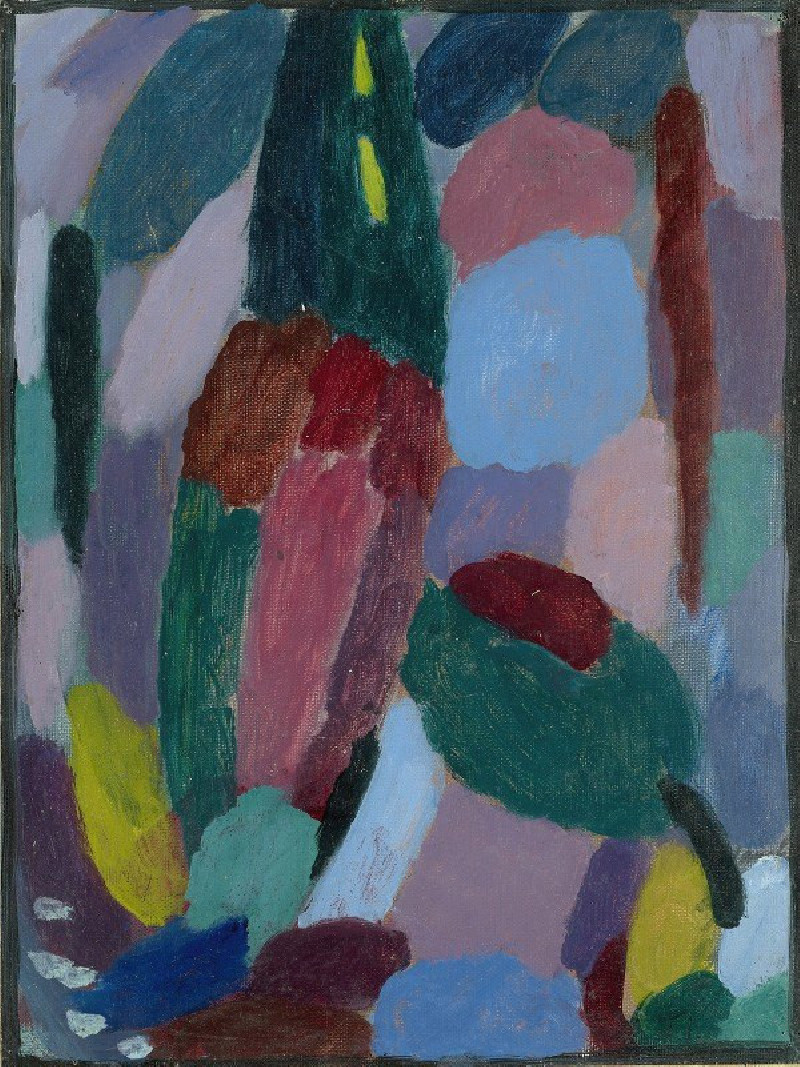Der Küchenjunge (1912)
Technique: Giclée quality print
Recommended by our customers
More about this artwork
"Der Küchenjunge" (The Kitchen Boy), created by the German artist Ernst Stern in 1912, is a distinctive piece characterized by its dynamic composition and playful subject matter. The painting portrays a young kitchen boy in mid-leap, capturing a moment of youthful exuberance and carefree energy. This delightful illustration, executed primarily in ink with subtle coloring, exhibits the boy adorned in a traditional and elaborately detailed outfit that suggests a setting in the past, perhaps reflecting a bygone era of kitchen staff in grand households or royal courts.The boy's attire, ornamental and richly textured, contrasts with the ordinariness typically associated with kitchen work, infusing the scene with a whimsical, almost theatrical quality. He carries two dead game birds, likely a nod to his duties in the kitchen, while a knife tucked into his belt hints at the utility and readiness demanded by his role.Ernst Stern's artwork invites viewers to reflect on the roles and representations of service staff in art, juxtaposing a lower status job with a visually glorious presentation that elevates the boy’s mundane duties to an almost heroic level.

